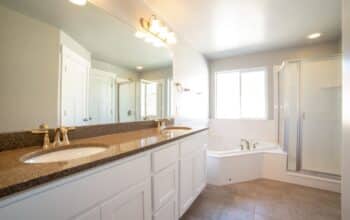
Decking boards provide the surface upon which the rest of your decking is constructed. They’re the most visible aspect of your deck, so choosing them carefully is crucial. Don’t worry if some look a little tough, as you can usually work around minor flaws. Here are some tips for selecting the right boards for your decking project. Using proper prep and drill techniques for decking installation will ensure that your deck is sturdy and looks great for years to come.
Conditions That Affect Decking
If you’ve got composite decking that doesn’t have a protective plastic wrap on it, you should consider replacing it with a waterproof one. This type of decking can hold water in its grooves, causing mould and mildew to grow. While it is often considered low-maintenance, it’s important to keep your deck clean and dry to prevent these problems. However, composite decking boards can be susceptible to shifting and moving.
When deciding on the right size and type of decking boards, consider how much moisture and temperature your home experiences. If you live in a humid climate, plan for the boards to expand and contract in wet weather. A professional can recommend the appropriate gap sizes for your deck. Ideally, the gaps should be one to two inches apart. However, if the gaps are too small, they can trap debris, leading to rotting.
Wood decking can expand or contract depending on the seasonal humidity. When the temperature of the decking board is too high or too low, it can result in cracks and pushed-out fasteners. To prevent cracks, it is essential to plan your deck so that air can circulate freely between the boards. Rain can also be harmful to wood decking. Rainwater can soak into the boards and cause rot.
When it comes to moisture, it is crucial to consider humidity and temperature. During summer, the heatwave is in full swing in many parts of the country. High temperatures, especially in the Midwest, increase the chance of wood expansion and contraction. However, if you’re installing a new deck during the summer, you’ll need to watch the temperature as it reaches 90 degrees. This will ensure that the wood will expand or contract in one direction, not both. Humidity causes wood to swell, particularly in the Southeast and East coast.
Types Of Decking Boards
When selecting decking boards, you will have several choices. There are two types: hardwood and softwood. Hardwoods are trees that lose their leaves every year. They are generally denser than softwoods. The density of the board will also determine its strength, durability, and appearance. The most common sizes for a decking boards Ipswich supplier provides are 4″, 6″, and 8″. It’s the same with other suppliers around the world.
There are many different types of decking boards, each with their own pros and cons. Choosing the right one for your home will depend on your budget, style, region, and project. Getting advice from a professional deck builder or a friend who has recently had a deck installed is a great way to narrow down your choices and get a better idea of what will work for your needs. You can also consult the opinions of other homeowners who have used each type of decking material.
Pressure-treated wood is another option. However, it has many drawbacks. Pressure-treated lumber contains chemicals that are harmful to the environment. While some manufacturers are switching to environmentally friendly chemicals, most still use harsh chemicals. Pressure-treated wood is also the most expensive, but it can last up to 25 years. You can choose to stain the treated wood to match your desired colour scheme. However, pressure-treated wood is more expensive than natural wood, and it’s not recommended if you’re on a budget.
When choosing decking boards, you will also need to think about the joist spacing. Joist spacing refers to the distance between joists. The longer the gap between joists, the bigger the spacing between them. In this case, you’ll have to choose thicker boards. In addition to the joist spacing, the type of boards you choose will determine how far your deck joists will be spaced.
Common Board Sizes
There are many factors to consider when selecting a material for your deck. The width of a two-by-six-inch board can vary by up to a quarter-inch. Similarly, a five-by-four-inch board is slightly narrower than a two-by-six-inch board. This is because the wood species used for 5/4 boards has rounded edges, which prevent splinters and scuffing.
The thickness of a decking board depends on the strength of the wood. Different species of woods have different strengths, making them suitable for decking of different sizes. Soft trees are weaker than hardwoods, which are generally stronger. To determine the strength of a product, check its MOR rating, also known as bending strength. It indicates the strength of a product before it ruptures. Once you know the strength, choose the appropriate board thickness.
Joist spacing refers to the distance between the joists. Joists are spaced on-center, and the larger the space between them, the stronger the decking board must be. As a result, if the joist spacing is larger than the decking board, you must choose a stronger board. Additionally, the spacing should match the decking material’s weight. A deck made of hardwood will be heavier than its soft counterparts.
If your deck has multiple joists, consider buying a deck board with a 12-inch OC spacing. These boards have a wider range of thickness, but they are not as durable. Nevertheless, they are generally cheaper than a two-by-six. The thickness will also help prevent twisting. You can also use a joist spacing of 16″ to accommodate larger deck boards. It will be easier to find decking boards that match your spacing if you use a guide.
Predrilling Required
Before installing screws in your decking boards, you should predrill the wood. If you don’t, you could end up with a sub-par installation. This is especially true if the wood is not properly treated, such as if it is sitting in a warehouse. Additionally, you’ll need to predrill the board within a half-inch of the end of the board. Also, make sure to drill the board with the right size bit so the screw threads slide through the hole without splitting the wood.
In the past, deck builders used nails to install softwood decking. These materials didn’t need predrilling, but with updated building codes, it is now required. Predrilling allows for fasteners to penetrate the wood’s dense fibers without causing it to split or buckle. It also prevents the boards from cracking or rotting. You should also avoid leaving decking boards exposed to the sun for weeks to allow the wood to dry.
If you choose not to predrill your decking boards, you risk stripping them and breaking the screws. Different materials have different durability levels, so choose screws carefully. Choose higher-quality screws for your decking, as they won’t bend as easily as low-quality screws. Lower-quality screws, on the other hand, tend to corrode and bend much more easily. This can damage the deck, making it unstable.
Screws must be a minimum of seventy-five percent of the diameter of the screw, as required by the National Design Standard. Generally, deck screws should be inserted through a countersunk hole, and require two fasteners. When the screws are inserted through the decking boards, you should make sure to predrill the screws as well. If you’re using a wood screw, make sure to predrill the holes first.
Moisture Content Of Treated Lumber

In general, pressure-treated lumber is less than 20% MC (moisture content). However, many deck builders choose to install their deck boards immediately after delivery. To avoid this problem, be sure to choose pressure-treated lumber with a moisture content of no more than 19% MC. Most deck builders use lumber with an MC of twenty percent or less and install it on-site, but the exact moisture content of pressure-treated lumber may vary considerably.
To test the moisture content of treated lumber, you can use a digital moisture meter. The device has two prongs to check the moisture content. Make sure the device is calibrated before using it. Check several spots to be sure it is accurate. It is also a good idea to take multiple measurements to ensure that the lumber is completely dry before painting. The more moisture content in a piece, the more likely it will warp, split, or otherwise become unusable.
In addition to the moisture content, it is important to know the moisture content of treated lumber for decking boards. When wood is exposed to constant RH, it reaches equilibrium. This happens because of the cell wall giving up moisture and shrinks. The process continues until equilibrium is reached, which is usually hot and dry conditions. The wood’s moisture content can fluctuate by up to 16% depending on the region and time.
It’s important to know the moisture content of pressure-treated lumber for decking boards. If it’s too wet, it may shrink or swell, causing cracks, gaps, or squeaks in the wood. Wet pressure-treated lumber is also more slippery and more difficult to cut. It can even shrink or warp when wet, so it’s important to store pressure-treated lumber in a dry place to avoid these problems.



